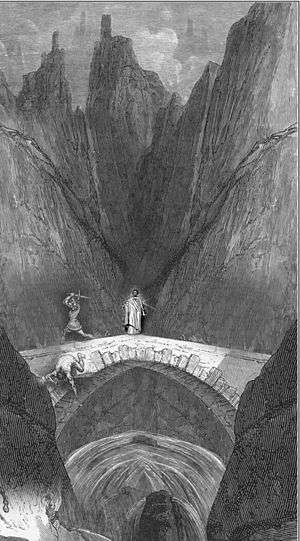Paradox of fiction
The paradox of fiction is a philosophical problem about how people can experience strong emotions from purely fictional things, such as art, literature, and imagination. The paradox draws attention to an everyday issue of how people are moved by things which, in many ways, do not really exist. Although the ontology of fictional things in general has been discussed in philosophy since Plato,[1] the paradox was first suggested by Colin Radford and Michael Weston in 1975.[2] After Radford and Weston's original paper, they and others have continued the discussion by giving the problem slightly differing formulations and solutions.[3]
The paradox
The basic paradox is as follows:[1]
- Most people have emotional responses to characters, objects, events etc. which they know to be fictitious.
- On the other hand, in order for us to be emotionally moved, we must believe that these characters, objects, or events, truly exist.
- But no person who takes characters or events to be fictional at the same time believes that they are real.
The paradox is that all three premises seem to be true, but can not logically be true at the same time. If any two points (e.g. 1 and 3) are taken to be true, then the third (e.g. 2) must either be false or else produce a contradiction.
Proposed solutions
The various proposed solutions to the paradox can be divided into three basic groups:[1][3]
- The pretend or the simulation theories, proposed for example by Kendall Walton.
- The pretend theories deny premise 1 and argue that with fiction we do not experience real emotions but rather something less intense. For example, when watching a horror movie where the monster makes an attack towards the viewer (towards the camera), the viewer can be startled but does not truly fear for his or her life.
- The thought theories, for example from Peter Lamarque, Noël Carroll, and Robert J. Yanal.
- The thought theories deny premise 2 and claim that we can have genuine emotions from things even if we do not believe them to exist.[4]
- The illusion or realist theories, for example from Alan Paskow.
- The illusion theories deny premise 3 and claim that, in a way, the fictional characters are real. They suggest that Samuel Taylor Coleridge was right saying that fiction involves a "willing suspension of disbelief", i.e. believing in the fiction while engaging with it.
See also
References
- 1 2 3 Paskow, Alan (2004). The Paradoxes of Art : A phenomenological investigation. Cambridge: Cambridge University Press. ISBN 0-521-82833-3.
- ↑ Radford, Colin; Weston, Michael (January 1975). "How can we be moved by the fate of Anna Karenina?". Proceedings of the Aristotelian Society, Supplementary Volumes. 49: 67–93. JSTOR 4106870.
- 1 2 Schneider, Steven. "The Paradox of Fiction". Internet Encyclopedia of Philosophy. Retrieved 27 June 2012.
- ↑ Podgorski, Daniel (November 13, 2015). "Why Stories Make Us Feel: Colin Radford's So-called "Paradox of Fiction" and How Art Prompts Human Emotion". The Gemsbok. Your Friday Phil. Retrieved February 22, 2016.

